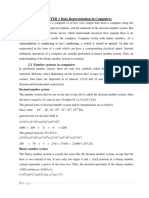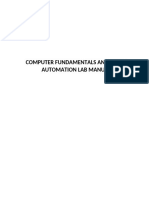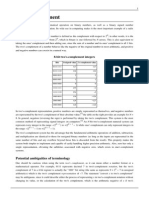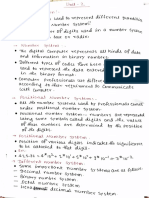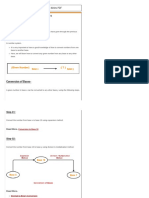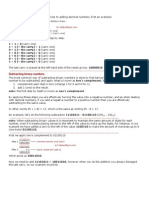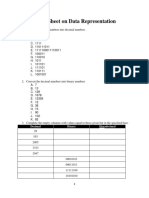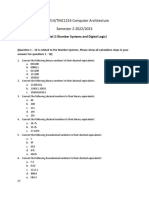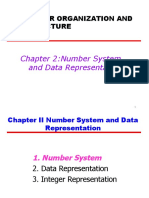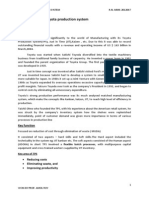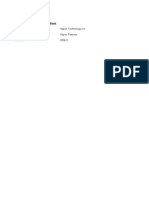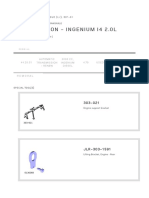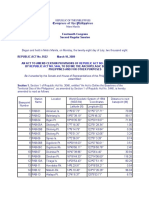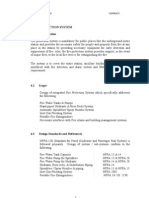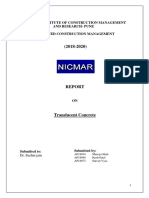0% found this document useful (0 votes)
635 views73 pages1.number System
The document discusses different number systems including decimal, binary, octal, and hexadecimal. It provides details on how each system works, such as having base 10 for decimal, base 2 for binary, etc. Conversion methods between the different systems are also explained, such as dividing decimals by 2 to get the binary equivalent or multiplying binary digits by powers of 2 to get the decimal. Worked examples are shown for clarification.
Uploaded by
Omkar KaleCopyright
© © All Rights Reserved
We take content rights seriously. If you suspect this is your content, claim it here.
Available Formats
Download as PDF, TXT or read online on Scribd
0% found this document useful (0 votes)
635 views73 pages1.number System
The document discusses different number systems including decimal, binary, octal, and hexadecimal. It provides details on how each system works, such as having base 10 for decimal, base 2 for binary, etc. Conversion methods between the different systems are also explained, such as dividing decimals by 2 to get the binary equivalent or multiplying binary digits by powers of 2 to get the decimal. Worked examples are shown for clarification.
Uploaded by
Omkar KaleCopyright
© © All Rights Reserved
We take content rights seriously. If you suspect this is your content, claim it here.
Available Formats
Download as PDF, TXT or read online on Scribd
/ 73








